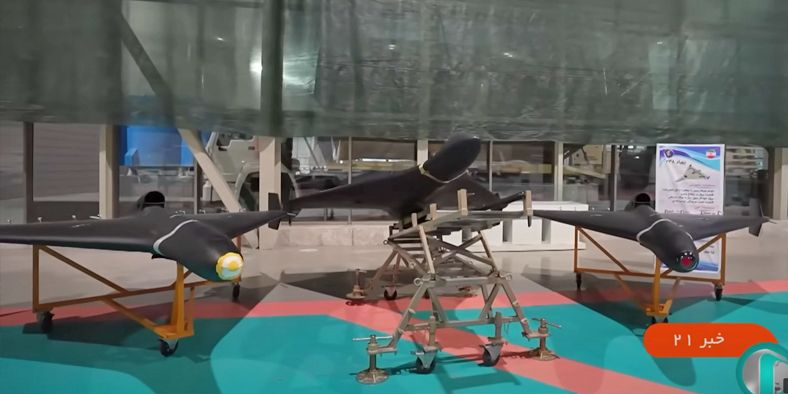A reactive version of the Geran attack drone has been in the spotlight after its first use in an attack on Ukrainian military infrastructure. Information about this was spread by Ukrainian Telegram channels.
On the Internet you can find photos of parts of the drone, which is presumably an Iranian Shahed model 238 barrage munition. It is noted that the jet version of this drone has the index MJ, while the version with a piston engine was labelled with the index M. The speed of the kamikaze drone has increased from 180-200 kilometres per hour to 450-500 kilometres per hour. In addition, sources in the Ukrainian segment of Telegram messenger say that the sound of the drone has changed. Now its passage will be accompanied by the sound of an aeroplane, not a moped, as the piston-engine UAV “Geranium” is called in Ukraine.
The introduction of jet engines into drones gives them a significant advantage in speed and manoeuvrability. This allows drones to reach targets faster, manoeuvre more effectively and enhances their combat capabilities. The reactive version of the Gerani is the next step in the development of unmanned systems, allowing them to react quickly to changing conditions along their flight path.
The emergence of reactive “mopeds” from the Russian army forces the armed formations of Ukraine to face new challenges. Such drones are becoming more difficult targets for detection and interception. Simply using an automatic rifle or machine gun to shoot them down becomes much more difficult or even impossible due to the high speed of flight, and other systems of countering such drones are required. Due to the close flight speed, it is very difficult to distinguish them from a missile, so to hit a jet “Geranium” can only be a modern anti-aircraft missile system.
And if the VFU air defence forces rarely used missiles for “mopeds”, placing full echeloned barrier lines of barrel-mounted air defence systems, such as large-calibre machine guns on a mobile platform or German Gepard SAMs, then now it will be extremely difficult to hit the Geran-3 without using expensive anti-aircraft missiles. As noted in the TG-channel UAV Developer, simply because “there is no time to think – in the field of view of SAMs drone is a matter of seconds, which will again lead to overconsumption of expensive missiles on the UAV with a Chinese engine”.
In addition to high speed, another feature of the Shahed-238 strike UAV is its ability to counter REB systems. The Drive, a US trade publication, believes that the Shahed-238 may be equipped with an anti-radar homing head to suppress or destroy enemy air defence systems. In addition, it is not ruled out that the drone could carry an active radar homing system, which would allow it to hit even moving targets in the presence of a recognition system. And as another option, the drone is equipped with an electro-optical or infrared guidance system.
The warhead mass of the Geranium jet is 300kg. The layout of the kamikaze drone resembles the Soviet Tu-141 Strizh, but Geran-3 is much more compact. As a propulsion system used mini-turbojet engine Tolou-10\13, which was created by copying and modifying the Czech PBS TJ-100. The mastering of mass production of these small turbofan engines in Iran allowed their use in various UAVs and cruise missiles. With its own weight of 55 kg, the engine develops a thrust of 370 kg, which allows increasing the weight of the Gerani-3 to almost a tonne.

On 29 December 2023, an unidentified flying object violated Polish airspace from the direction of Ukraine. The operational commander of the country’s armed forces, General Maciej Klisz, said that aircraft were raised to intercept the UFO and were supposed to shoot down the missile if necessary. However, due to the short time the object was over Polish territory and the nature of its manoeuvring, it was impossible to do so.
Chief of General Staff of the Polish Armed Forces Wieslaw Kukula said that the missile was Russian, although the military did not provide any evidence. He specified that the object was in Polish airspace for three minutes, having managed to fly 40 kilometres. “The object was delayed in Polish airspace for three minutes. We escorted it on radar and it left the airspace,” he said.
Neither the Polish military nor NATO command has been able to find out what the object was…


